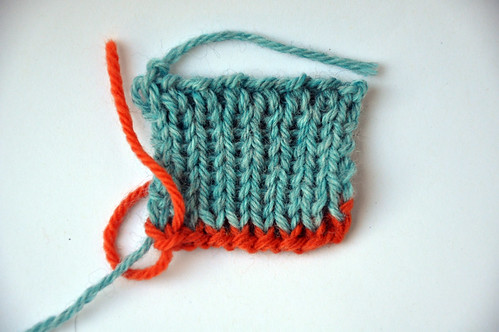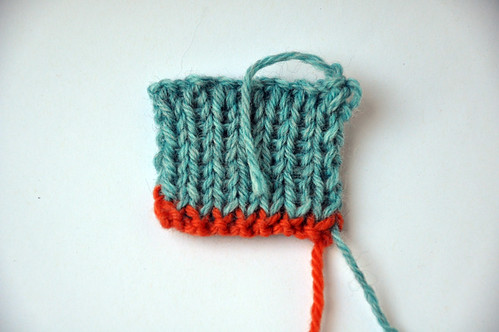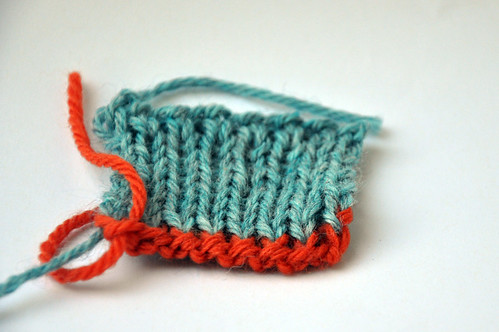

I love this one because of the rhythm of working it. I can cast on stitches quite quickly. As a stretchy cast on method, it’s not bad. My 2 inch swatch stretched to 4.25 inches along the cast on edge.
The right side isn’t unattractive, but the cast on is obvious. A twisty looking line creates a defined edge. It doesn’t bother me, but I know some knitters don’t like it.

The long tail cast on has an obvious wrong side. The ridge can blend in on reverse stockinette and garter stitch, but it wouldn’t work well with reversible ribbing.
This cast on method also has one big problem. The tail of yarn can be awkward when casting on a large number of stitches. You have to guess correctly how long your tail needs to be which can waste yarn or require you to start over if you come up short. The tail could potentially get tangled if you’re casting on hundreds of stitches. It’s just a bit annoying.

So, will I keep using it? Yes and no. I probably will continue to use it as my go-to cast on method in situations where it won’t be seen like necklines where I will pick up stitches. I’m going to stop using it on bottom up projects because it just isn’t the best option for working with ribbing.
Next week I will be looking at the tubular cast on.
Leave a Reply to Andrea Cancel reply